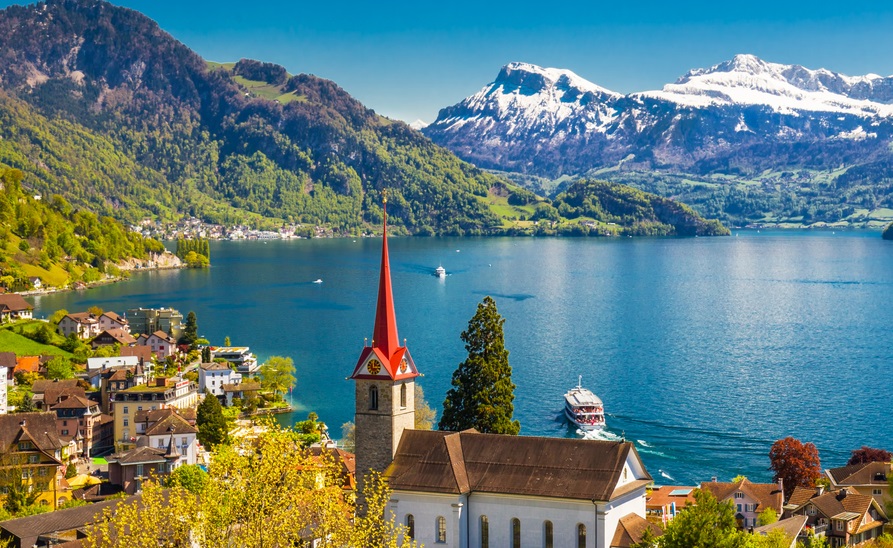The fragrance is composed of three different notes: Top note, heart note and base note. The top note is the one that convinces us in the store to buy the perfume. It gives the first impression that you get by applying it and smelling it. The heart note shows you several hours later how the perfume combines with your own body odor. Therefore, floral notes are often used here. The base note is responsible for the long-lasting smell. It is usually a rather heavy compound in which animalic musk aromas are sometimes used. There is a very clear distinction between these three notes. Whether we like a fragrance so much that we use it frequently, the heart and base notes are more decisive for this than the spontaneous decision after the top note in the store.
And what is Chanel N° 5 made of? For that, let’s go back to the origins. Chanel N° 5 was created by Ernest Beaux, former French chemist and perfumer to the Russian Tsar’s court. It is said that he used around 80 essences. Some sources now speak of only 31, but of course this is also part of the myth: the exact recipe lies in the safe. What is known is that the top note is dominated by a radiantly fresh, slightly metallic and waxy-smoky aldehyde complex, with its typical hints of rose petals and orange peel. The citrusy facets are picked up and underscored by bergamot oil, linalool and petitgrain oil. The heart notes are spanned by the fragrance pillars of jasmine, rose, lily of the valley, iris butter and ylang-ylang oil, among others. Other ingredients include may rose, neroli essence and Brazilian tonka beans. This fragrance is nuanced by sandalwood and patchouli oils. Vanillin, coumarin and storax then lead to the emphatically sensual musk complex, which determines the theme in the final act of the composition and in the original from 1921 consisted of real musk components. The result is an enormously broad fragrance note. Experts agree that the perfume got its special character from the chemically produced aldehydes – dehydrated alcohols from floral nuances that bring out the scent in the top note in a special way. So it is also that novel blend of naturalness and artificiality that made Chanel N°5 revolutionary.
Monsieur Mul and Chanel have a highly exclusive contract…
Interestingly, to this day Chanel advertises that it uses natural extracts of jasmine and May rose grown in Grasse by Monsieur Mul in its production. Every drop of rose essence in the world’s best-selling perfume comes from his five acres of land. Why from there in particular? Simple: Mul’s Rosa centifolia – its exact botanical name – is the best rose flower in the world. “Fragrances are something intangible and yet they have a lot to do with craftsmanship,” explains Olivier Polge, a Frenchman who has known the world of fragrances since childhood. His father Jacques Polge was Chanel’s in-house perfumer for 37 years. Today, when Oliver Polge looks out of the window, he looks at the many flower fields that the long-established Mul family cultivates exclusively for Chanel’s perfume creations.
Joseph Mul, his son Fabrice and his family rule over the land where the May rose bushes grow. For almost thirty years, these blossoms have been harvested here, only in spring, and processed in an extraction plant not far from the flower fields into a highly concentrated extract that is used exclusively in Chanel’s Extraits-de-Parfum. In the end, 400 kilograms of rose blossoms produce 600 grams of rose absolute. From sunrise, the pickers are out in the rose fields to harvest the fresh, extremely delicate blossoms, which only open fully in daylight. Time is short, because the rose only blooms once a year and the harvest must be brought in within four weeks. Everything has to happen quickly, the delicate blossoms have to be transported from the collection basket to the nearby factory within a few hours.
The wind carries the fragrance. The setting looks as if it has sprung from a French picture book, and yet it is the cradle of a perfume giant. But despite all the enthusiasm, the rose takes a secondary role at Chanel, because: “Chanel fragrances do not embody a single flower, but always a bouquet. “And that consists primarily of red blossoms. The colouring goes back to Madame Chanel’s floral preference since she created the legendary “Chanel N°5” with neroli, jasmine and May roses from Grasse with perfumer Ernest Beaux in 1921, dedicating it by name to the date on which her new collections were presented.
Perfumes are something that makes life more beautiful
Nothing was further from fashion designer Gabrielle “Coco” Chanel’s mind at first than to provide women with a fragrance in addition to chic dresses and blouses. “Women only wear perfume when they have bad smells to hide,” is one of the many bon mots she passed down. Chanel changed her rigid attitude when she met Ernest Beaux in Cannes. Chanel commissioned Beaux to create a perfume as a Christmas gift for her clients, which was originally to be limited to only 100 bottles. As the demand for the extraordinary fragrance grew, the perfume went on sale in 1922. Ernest Beaux had prepared ten samples in his laboratory in Cannes: The vial that most appealed to Chanel was labeled “Number 5.” “This will be very expensive, nothing is more expensive than jasmine,” Beaux warned her, according to legend, but Chanel’s reply is said to have been, “Then please add some more jasmine. I want to make it the most expensive perfume in the world.” She stuck with the number 5, after all, it suited the date May 5, when Coco Chanel usually presented her new collections to the public. She also considered five to be her personal lucky number. So pure number magic was responsible for the catchy name – anyone looking for Chanel N° 1, 2, 3 or 4 will be unsuccessful.
Coco Chanel: the designer whose name is still known today created revolutionary fashion and wrote perfume history
Beauty, luxury and extravagance: this is what Chanel N°5 has stood for since the beginning. From the 1950s onwards, this image was also used in advertising campaigns. To this day, the company hires famous actresses and models as the face of the brand. Ali McGraw, Lauren Hutton, Candice Bergen, Nicole Kidman and again and again Catherine Deneuve stood with the famous bottle in front of the camera of photographers like Richard Avedon, Helmut Newton, Irving Penn and Bettina Rheims. A coup was achieved in 2012: Brad Pitt was the first man to model a women’s perfume. For generations, Chanel N°5 has stood for elegance and French haute perfumery, for sensuality and strength. And so, in this anniversary year, Chanel N°5 is far more than “just” a fragrance.
Wonderfully atmospheric pictures of the rose plantations can be seen on the internet. Mostly published by people who were invited by Chanel to visit the plantation in 2016. An absolute exception. Because Joseph Mul does not offer tours, the location of his rose fields is secret.
Tip from the GoSixt editorial team:
In the vicinity of Grasse, there are a number of smaller companies such as Domainede Manon (owner Carole Biancalana is a supplier for Dior) that offer such plantation tours.
And at the small hotel La Bellaudiere, a converted 16th century house awaits you in the French capital of perfume.
For more information on fragrances, visit the gardens of the Musée international de laParfumerie in Mouans-Sartoux. Not only are all the plants needed for perfume production grown here, but you can also get wonderful background information on the rose varieties of the Pays de Grasse.
The place Grasse can be reached from Nice in less than an hour. Ideal for this would be on the one hand enough time for the view off the route and on the other hand a convertible for the trip. And the convertible directly at the airport is available here at Sixt.






